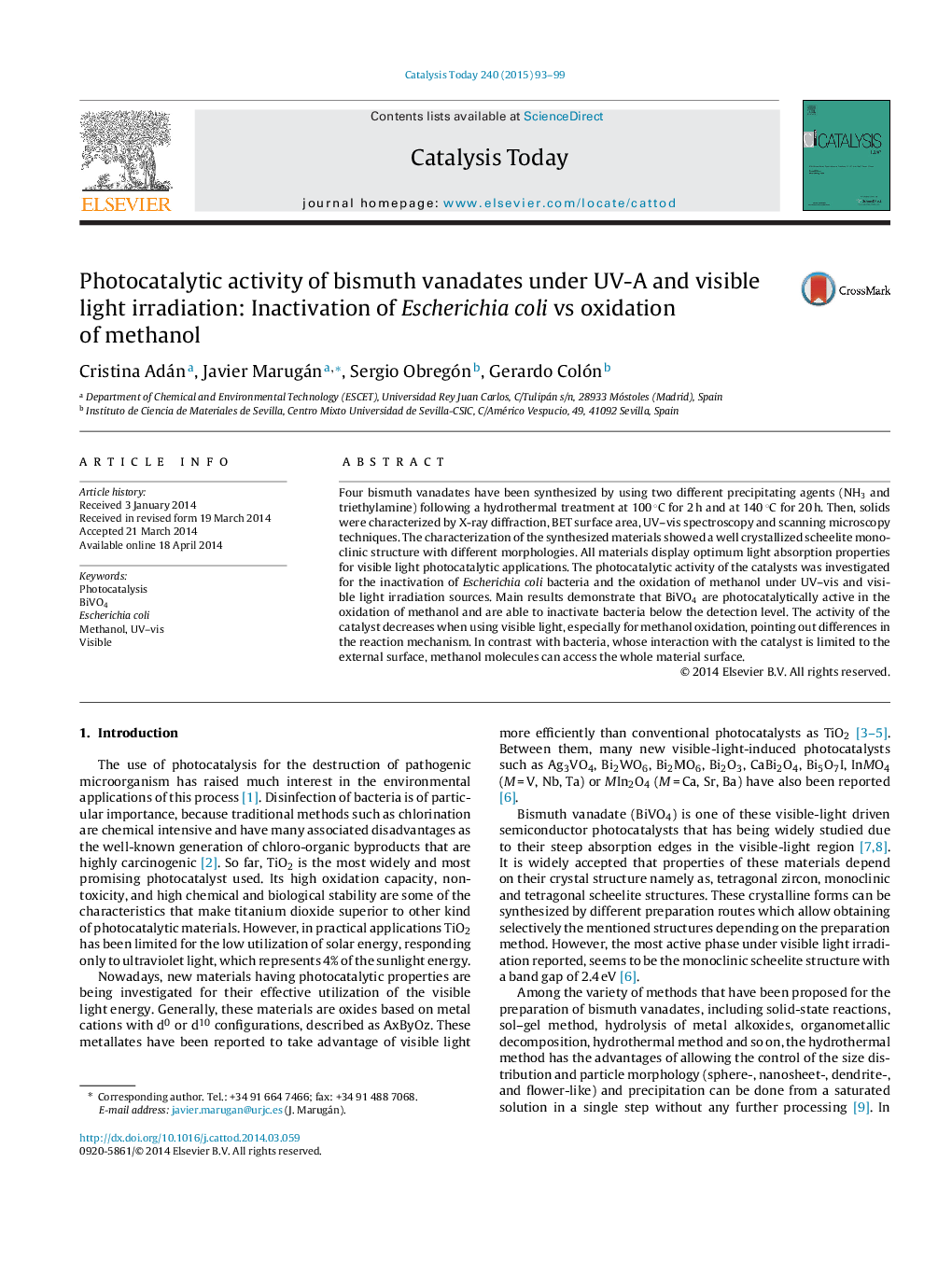| Article ID | Journal | Published Year | Pages | File Type |
|---|---|---|---|---|
| 54433 | Catalysis Today | 2015 | 7 Pages |
•Four BiVO4 sol–gel materials photocatalytically active under UV–vis and visible light.•Catalyst prepared with NH3 displays better activity for the oxidation of methanol.•Escherichia coli inactivation is more efficient using triethylamine as precipitating agent.•Efficiency of Escherichia coli inactivation with visible light correlates with light power.•Methanol oxidation efficiency with visible light decreases beyond power reduction.
Four bismuth vanadates have been synthesized by using two different precipitating agents (NH3 and triethylamine) following a hydrothermal treatment at 100 °C for 2 h and at 140 °C for 20 h. Then, solids were characterized by X-ray diffraction, BET surface area, UV–vis spectroscopy and scanning microscopy techniques. The characterization of the synthesized materials showed a well crystallized scheelite monoclinic structure with different morphologies. All materials display optimum light absorption properties for visible light photocatalytic applications. The photocatalytic activity of the catalysts was investigated for the inactivation of Escherichia coli bacteria and the oxidation of methanol under UV–vis and visible light irradiation sources. Main results demonstrate that BiVO4 are photocatalytically active in the oxidation of methanol and are able to inactivate bacteria below the detection level. The activity of the catalyst decreases when using visible light, especially for methanol oxidation, pointing out differences in the reaction mechanism. In contrast with bacteria, whose interaction with the catalyst is limited to the external surface, methanol molecules can access the whole material surface.
Graphical abstractFigure optionsDownload full-size imageDownload high-quality image (192 K)Download as PowerPoint slide
